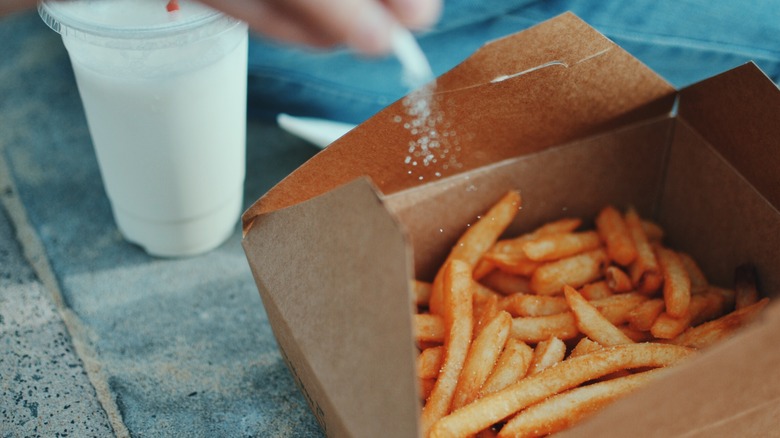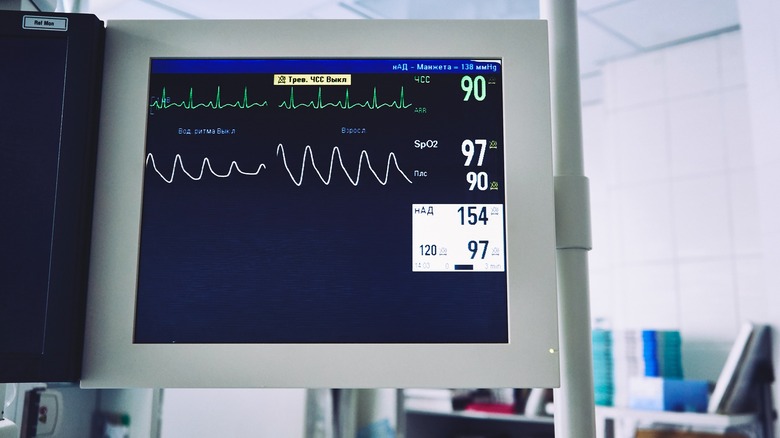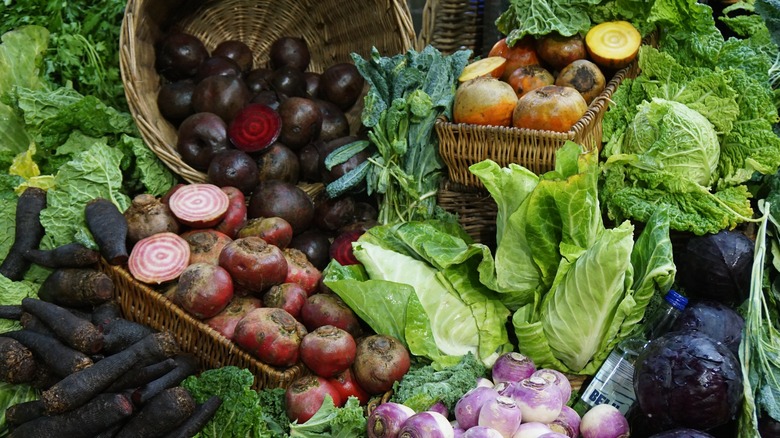How Does Sodium Intake Impact Your Heart Rate?
A high-sodium diet can be bad for your health, raising your blood pressure and increasing your risk of stroke and heart disease (via the Food and Drug Administration). While some sodium is necessary for the body to function, the fact is, according to the Centers for Disease Control and Prevention, that excessive sodium consumption is a problem for most Americans. On average, Americans consume more than 3,400 milligrams of sodium per day, considerably more than the recommended limit of 2,300 milligrams daily.
Working in tandem with potassium, sodium acts as something of a chemical battery in our body, keeping our muscles contracting and controlling nerve impulses, while also maintaining a healthy balance of water and minerals (via the National Institute of General Medical Sciences). But too much sodium causes our bodies to retain more water than necessary, which, in turn, raises the volume of blood in the bloodstream, ultimately leading to high blood pressure. But, given that a high-sodium diet can raise the risk of heart disease, what does it do to your heart rate?
The difference between blood pressure and heart rate
Although they are both good indicators of your health, blood pressure and heart rate are two different things (via the American Heart Association). Your blood pressure tracks the force of the blood as it flows through your blood vessels, while your heart rate refers to the number of times your heart beats every minute. If your heart rate is high, it does not necessarily mean that your blood pressure will increase as well.
While high sodium is linked to a wide range of health problems, a 2016 study published in Frontiers in Physiology showed that a reduced intake of sodium actually led to an increased heart rate. In fact, the study found that the increase in heart rate caused by low sodium was equivalent to the decrease in blood pressure.
Additionally, according to Medical News Today, abnormally low levels of sodium in the body can lead to a condition known as hyponatremia, an electrolyte disorder that can cause lethargy, nausea, and confusion. Hyponatremia tends to be more common among older adults, who either take medications like diuretics, or have health conditions that lower sodium levels in the body (via the Mayo Clinic). According to Cleveland Clinic, you can reduce your risk of hyponatremia by not drinking alcohol to excess, not overhydrating, and hydrating with electrolytes when playing competitive sports or engaging in vigorous exercise.
Balance is the key
Your body does need sodium, so you shouldn't eliminate it entirely from your diet (via Cleveland Clinic). However, it's important that you keep your intake under control, consuming up to 2,300 milligrams a day, or around one teaspoon. It would be a good idea to avoid or limit fast foods and processed foods, as well as canned soups, frozen dinners, and bottled sauces, all of which tend to be high in sodium. If you do decide to eat these foods, be sure to check the nutrition labels.
When it comes to making good sodium choices, there are a few options you can turn to (via Healthline). Grains and beans such as brown rice, quinoa, and whole wheat pasta are good, low-sodium sources, as are eggs, yogurt, and avocado. Fresh fruits, such as apples, bananas, or oranges, and vegetables like spinach, carrots, and broccoli should always be on hand (via the U.S. Department of Health and Human Services).
According to WebMD, more than 70% of the sodium in your diet comes from processed foods or from dining out. As such, opting for fresh ingredients prepared at home is a great way to keep tabs on your sodium intake.



